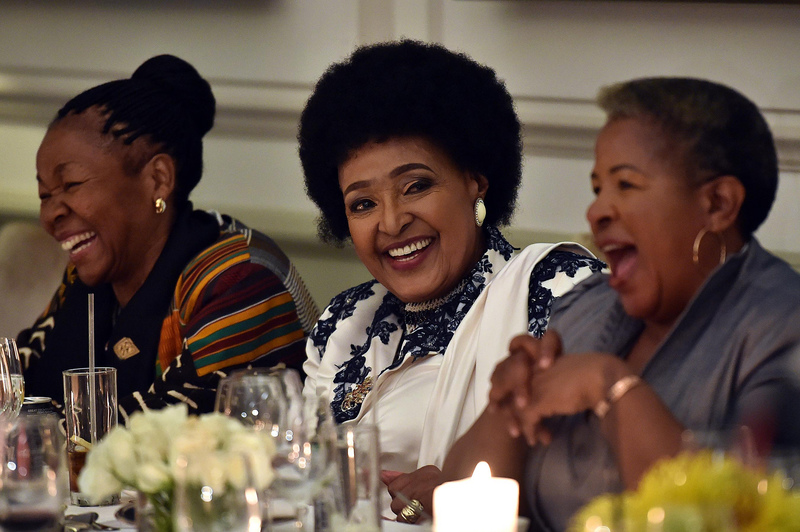Why the film ‘Winnie’ met all the criteria of a good documentary
26 April 2018 | Story Liani Maasdorp Photo SA Government Flickr Read time 8 min.
In life as well as in death, Winnie Madikizela-Mandela, has sharply divided South Africans. This was evident in responses to a documentary about her that was released in 2017 and broadcast on an independent TV channel in the country a fortnight after her death on 2 April 2018.
It was clear from the Twitterstorm that followed the broadcast of “Winnie” that there has been a lack of differentiation – among the public and in mainstream media – between journalism and documentary film. While both should be factually correct, there are important differences between them. For one thing journalism should be balanced, while documentary film can – and often should – be subjective.
“Winnie” should not be confused with news. It’s a film, and it had a life on the big screen before it was broadcast on television after Madikizela-Mandela’s death. It premiered more than a year ago in January 2017, at Sundance, one of the biggest film festivals in the world, where it won the director, Pascale Lamche, an award for her role. It was first screened in South Africa at the Encounters International Film Festival in June 2017.
The importance of the film lies in its opposition to the representations of Madikizela-Mandela that have dominated mainstream media since apartheid.
What makes a documentary
The pioneering documentary filmmaker John Grierson coined the term documentary film in the 1920s and subsequently defined it as a creative treatment of actuality.
Many others have attempted to define the form in more descriptive and prescriptive ways. But it’s Grierson’s definition that endures and remains the most welcoming of a variety of styles of and approaches to documentary film-making.
This definition acknowledges the creativity of the filmmaker, that the film is a creation and that it’s about the world. Yet it makes no claim to reality nor, for that matter, “the truth”. Instead it implies that it captures the filmmaker’s subjective perspective of the world.
As with journalism, it is important that documentary films are factually accurate.
There’s an implicit agreement between the filmmaker and audience: the audience expects that what is presented is well researched; that the filmmaker is thorough and honest. One of the reasons why documentaries take several years to produce is the care filmmakers take in deciding what content to include and how to frame it.
But accuracy mustn’t be confused with objectivity. To a large extent the mainstream expectation that a documentary film should present both sides of a story comes from our understanding of journalism. Society expects journalists to report objectively on newsworthy events. And we expect from a broadcaster to maintain balance between opposing perspectives in their coverage of an issue. But the documentary filmmaker is passionate about her subject. She has an opinion, which she communicates in a creative, visual way.
The documentary form provides time and space for deep reflection. The documentary filmmaker views a topic from a subjective perspective and her point of view should be clear in the final film. As a matter of fact this unique view of the world is what makes a documentary film what it is.
Documentary filmmakers don’t join a bar like lawyers, nor swear an oath like doctors. In the end the audience relies on the filmmaker’s integrity. And the filmmaker relies on the audience’s ability to think critically and to take responsibility for not taking a single film at face value, but rather to view, read and think further.
What the documentary is, and isn’t
In his book “Documentary: The Margins of Reality”, the theorist Paul Ward argues that in many cases, especially those involving injustice or where mainstream media representations are skewed to remain stubbornly ‘impartial’ and ‘balanced’ in the face of clear imbalances in the real world is to actually misrepresent that world and the power struggles that go on in it.
I would argue that this is often where the role of documentary filmmakers, especially those representing the historical world, lies: in bringing new knowledge to the public, or presenting a fresh view of popularly held “truths”.
“Winnie” is not just a biographical film and it’s not just an historical document.
Yes, it is focused on an important public figure and it traces her life in relation to historical events. But more importantly it is the first film to tell the story of Winnie Madikizela-Mandela’s life from her own point of view in a substantial and artistic way. It has been criticised for being one-sided, for presenting only her perspective. But that is the express purpose of this film. And in the context of the documentary genre, that is neither right nor wrong.
It’s now common knowledge that the apartheid regime exerted undue influence over the South African media and that Madikizela-Mandela was targeted in an attempt to discredit her to reduce her power and influence. She was a complex figure, no doubt. She was militant, a freedom fighter, a warrior. Not only an angel or a devil, perhaps both, perhaps neither.
Regardless of who she was and what she did, there’s no denying that she played a significant role in the fight against apartheid. In doing so Madikizela-Mandela made more personal, professional, emotional and physical sacrifices than most can imagine. Therefore Winnie the woman deserves to be heard, to be seen and to be acknowledged.
This article was published in The Conversation, a collaboration between editors and academics to provide informed news analysis and commentary. Its content is free to read and republish under Creative Commons; media who would like to republish this article should do so directly from its appearance on The Conversation, using the button in the right-hand column of the webpage. UCT academics who would like to write for The Conversation should register with them; you are also welcome to find out more from carolyn.newton@uct.ac.za.










